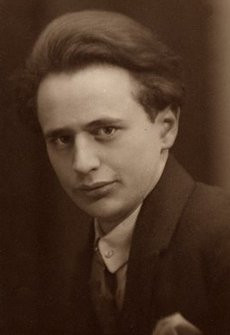
Jānis Kalniņš
(03.11.1904 - 30.11.2000 )
Jānis Kalniņš, composer and conductor, studied composition at the Latvian Conservatoire (1920–1924), and was conductor at the National Theatre (1923–1933) and the Latvian National Opera (1933–1944). In 1944 he arrived in Lübeck, Germany, as a refugee, and in 1949 went on to Canada. For 20 years he worked as lecturer in music at Fredericton Teachers College of Music in New Brunswick and as symphony orchestra conductor, later as organist and choir conductor. In 1981 Kalniņš was awarded an honorary doctorate by Mount Allison University in New Brunswick for his contribution to regional musical development.
Jānis Kalniņš first gained prominence as a talented musical dramatist with his operas and ballets written in the 1930s(Opera: Lolita’s Wonderbird, 1934; Hamlet, 1936; In Fire, 1937; Ballet: Autumn (one act), 1938; Nightingale and Rose (one act), 1938). His output of chamber music and orchestral music, particularly after 1940, was considerable, and included 5 symphonies and several cantatas. He generally avoided Romanticism in developing his style, leaning more towards classical objectivity and unadorned structural simplicity.
In his choral music of the 1920s and 1930s Kalniņš gradually moved away from the essentially Romantic style of the Latvian classics; in his works based on folklore he placed greater stress on elements of humour and dance, but in his monumental songs written 1931–1932 to lyrics by Jānis Sudrabkalns, the composer pioneered a fundamentally new direction in Latvian music – towards neoclassicism, towards pictorial representation and subtle description. Although his choral output is comparatively small (about 60 compositions), it contains works of significant dimension. Some are neoclassical in style, while others approach the Romantic lyrical-picturesque choral tradition in a fresh way. In his works based on folklore Kalniņš has concentrated mainly on elements of dance, playfulness and humour. Diatonic scales completely dominate his style, resulting in diminished contrasts between concordant and discordant intervals, with harmonic intervals of seconds used just as they exist in folk music (the second and chords comprising this interval used as consonances).
